Pregnancy and birth rates higher than global benchmarks for medical scheme members funding infertility treatment through the DHMS 'Assisted Reproductive Therapy Benefit'
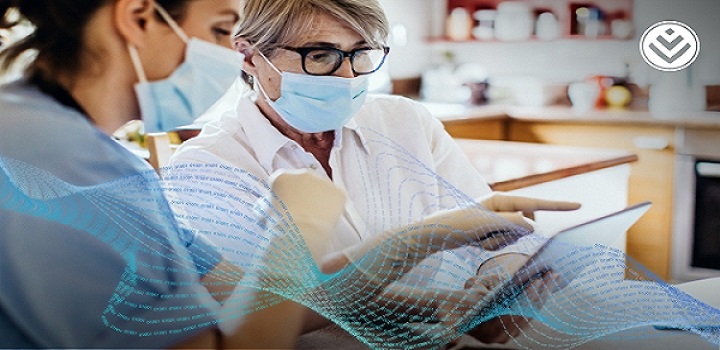
Discovery Health Medical Scheme members who have funded their infertility treatment through the Scheme's Assisted Reproductive Therapy Benefit show higher pregnancy and birth rates than international benchmarks.
Authors
Discovery Health's Josie Grubb (Actuarial Analyst), Anesu Williams (Actuary), Dr Noluthando Nematswerani (Chief Clinical Officer), Amalia Theologides (Content Lead), Shirley Collie (Chief Health Research Actuary), Lara Wayburne (Chief Health Intelligence Actuary)
Quick overview
This report highlights the success of the infertility treatment funded by the Assisted Reproductive Therapy Benefit introduced by Discovery Health Medical Scheme (DHMS) in 2021. This benefit helps members fund treatments like in vitro fertilization (IVF), intrauterine insemination (IUI) and more. We find that DHMS members accessing funding through the ART benefit have higher pregnancy and birth rates compared to international experience. In 2021, 70% of members who claimed for infertility treatment under this benefit fell pregnant, and 50% gave birth. In 2022, 64% fell pregnant, and 46% gave birth. These rates surpass those reported by the Society for Assisted Reproductive Technology (SART) in the US and the African Network and Registry for ART (ANARA). The report also notes that members with higher Vitality engagement status, indicating better overall health, have higher ART success rates.
Introduction
Infertility affects one in six couples in South Africa. Certain types of infertility can be addressed through in vitro fertilization (IVF) and intra uterine insemination (IUI), but many people may struggle to fund this form of treatment, which may often be funded out-of-pocket.
The Assisted Reproductive Therapy (ART) benefit was introduced by Discovery Health Medical Scheme (DHMS) in 2021 to assist members struggling with infertility to fund treatment costs. The benefit is offered to qualifying members between the ages of 25 and 50 years who are on the Comprehensive and Executive DHMS benefit options.
The ART benefit covers the following treatments:
- Assisted reproductive therapy (ART) consultations and medicine,
- A defined list of pathology tests,
- Ultrasound scans,
- Oocyte (egg) retrieval,
- Embryo transfer and freezing,
- Admission costs, including the laboratory fees,
- Embryo and sperm storage relating to the approved assisted reproductive therapy procedures.
- Sperm and egg freezing for members registered on the Oncology Programme
These benefits are funded at SASREG (South African Society for Reproductive Medicine and Gynaecological Endoscopy) accredited facilities only.
We set out to analyse the claims experience data for members who have used this benefit in 2021 and 2022, to uncover any trends worth noting over this period.
What did members claim for under the Assisted Reproductive Therapy benefit?
In 2022, there were 661 members using the ART Benefit. Most of these members (88%) claimed for IVF. IUI and egg donation and storage made up 5% and 6% of claims respectively.
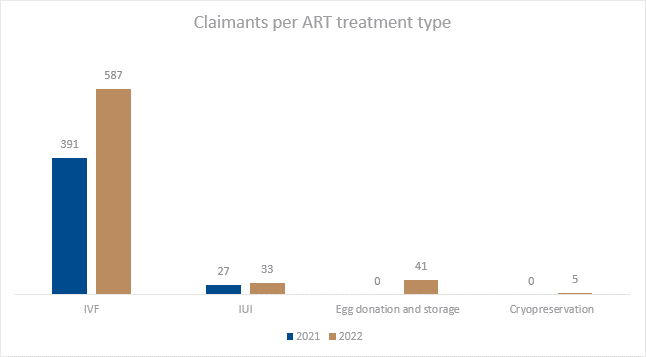
Figure 1: Utilisation (distinct claimants) of different ART treatment types in 2021 and 2022 for DHMS members.
At what ages are our members receiving different Assisted Reproductive Therapy treatments?
The average age of members who used the ART benefit was 36 years in both 2021 and 2022. When looking at the utilisation for IVF and IUI, which comprises majority of the claims under this benefit, we see that most claimants (45% - 46%) are between the ages of 35 and 39 years.
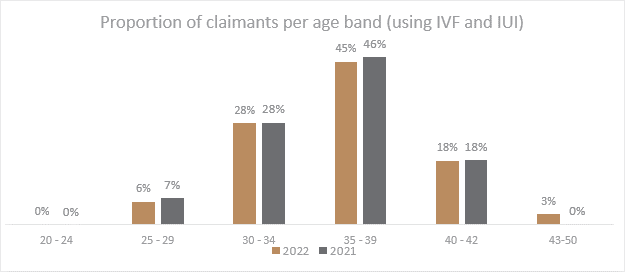
Figure 2: Utilisation (distinct claimants) of different ART treatment types in 2021 and 2022 for DHMS members.
In 2022, the youngest DHMS member to use ART was a 12-year-old member who used the benefit to freeze her eggs due to her needing to undergo oncology treatment. Cryopreservation is the freezing and storage of eggs or sperm until such time as one wishes to conceive. This option is invaluable for people who are undergoing chemotherapy or radiotherapy as part of an oncology treatment plan as oncology treatment can result in in infertility issues that may not be reversible.
Successful pregnancies and births for females using the ART benefit
Cover for fertility treatment through the Assisted Reproductive Therapy Benefit has helped many DHMS members to fall pregnant and give birth.
- In 2021, 70% of members (327) members who claimed for infertility treatment under this Benefit fell pregnant and 50% gave birth (236).
- In 2022, 64% (548) of members fell pregnant, and 46% (393) gave birth.
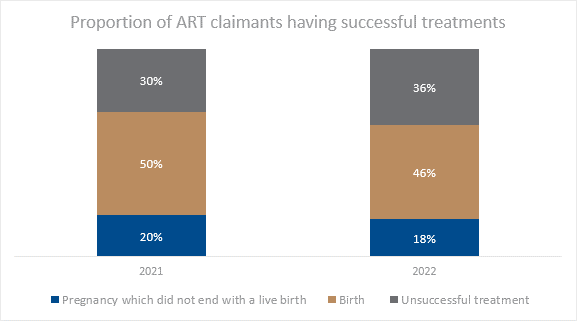
Figure 3: Proportions of 2021 and 2022 ART claimants falling pregnant and giving birth.
How do our success rates compare to international experience
Society for Assisted Reproductive Technology (SART) - United States of America
Looking at 2021 and 2022, it is interesting to note that success rates for IVF covered through the DHMS ART benefit are significantly higher than success rates published by the Society for Assisted Reproductive Technology (SART), with birth rates used as a measure of success. The SART is a US-based society for ART clinics with a large member base (approximately 90% of ART cycles in the USA in 2022 were conducted at clinics that hold SART membership).
DHMS success rates surpass those published by SART at each age band. The differential between DHMS and SART rates are higher for older lives undergoing fertility treatment, at least double for members over the age of 38 years.
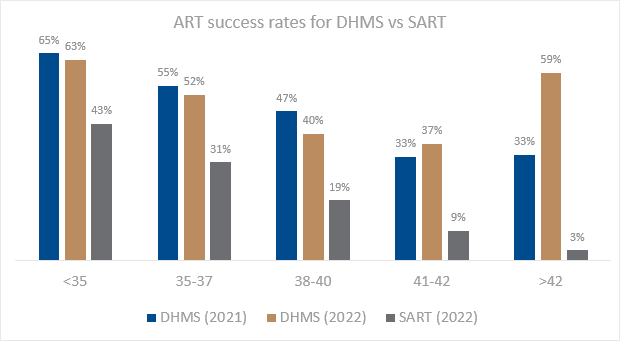
Figure 4: Success rates (birth rates) for DHMS versus SART (Society for Assisted Reproductive Technology) across different age bands.
ANARA - representing 15 countries in Africa
DHMS success rates for 2021 and 2022 also surpass those for ART treatment in Africa, as reported in the 2020 African Network and Registry for ART (ANARA) report (the most recent report available at the time of our analysis) where success rates are defined as the proportion of ART patients who fell pregnant.
ANARA releases reports on ART treatments based on ART cycle data from participating centres across Africa. The 2020 report incorporates data from 67 centres in 15 countries with a total of 37,063 procedures. SASREG accredited facilities also report their cycle data to ANARA. South Africa accounted for 22% of the 2020 procedures analysed in the ANARA report.
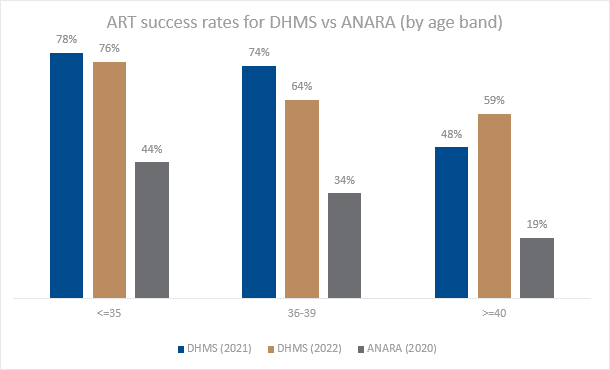
Figure 5 Success rates (pregnancy rates for IVF) for DHMS versus ANARA (African Network and Registry for ART) across different age bands.
The overall birth rate for 2020 as reported by ANARA across a range of age bands was 28.1%. This birth rate is lower than the overall DHMS birth rate of 54% in 2021 and 51% in 2022. It is also lower than the DHMS birth rate for females over the age of 40 (the likelihood of successful ART diminishes with age), which was 35% in 2021 and 41% in 2022.
It is important to note that DHMS offers egg donation as an option for members, while the ANARA data analysed here is for the transfer of a woman's own embryo only.
Better birth outcomes for singleton births compared to multiple births
The ANARA report shows better birth outcomes for singleton births compared to multiple births. The proportion of preterm births (before 37 weeks) increases for twins, triplets and other multiples, with a higher risk of perinatal mortality in these cases. The transfer of multiple embryos may increase the chances of falling pregnant, but may also increase the chances of becoming pregnant with more than one baby. With this in mind, single embryo transfers are the safer option when it comes to optimising birth outcomes. As such, SASREG has issued guidelines for best-practice with regards to single versus multiple embryo transfer, linked to patient-specific factors. With DHMS aligned to SASREG's guidelines, the multiple baby birth rate for DHMS members is significantly lower than the multiple baby birth rate reported by ANARA.
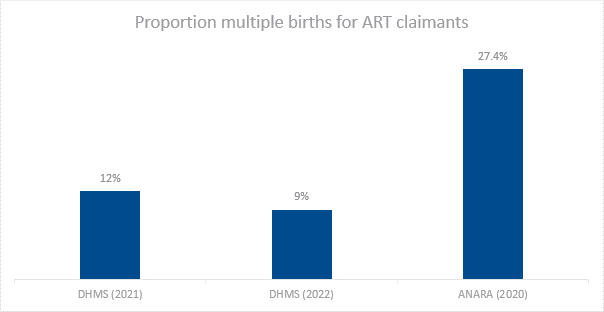
Figure 6: Multiple birth proportion reported among DHMS members compared to those reported on by ANARA (African Network and Registry for ART).
DHMS members who are Vitality engaged have higher ART success rates
Overall health and wellbeing may also have an impact upon the chances of success in fertility treatment. Many DHMS members are also members of Vitality - a behaviour change platform, which guides and incentivises people towards better health. A higher Vitality status indicates higher levels of engagement with the programme through physical activity and other healthy behaviours. In 2022 there were 139 highly engaged Vitality members and 140 unengaged members claiming for ART benefits. Our analysis found that highly engaged members had a higher proportion of pregnancies and successful births compared to the unengaged cohort. This may be indicative of a correlation between health status and successful ART outcomes.
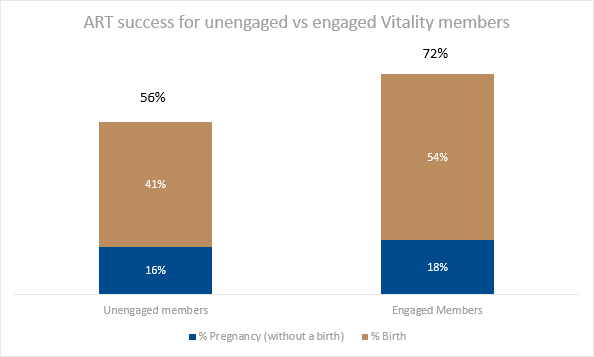
Figure 7: Birth and pregnancy outcomes for unengaged versus engaged Vitality members for Assisted Reproductive Therapy benefit claimants in 2022
These findings highlight the importance of adopting or maintaining healthy habits, such as regular exercise and balanced nutrition, for individuals undergoing ART treatment. These practices could potentially enhance the likelihood of achieving a successful pregnancy and birth.
Concluding comments
Since inception in 2021, the DHMS Assisted Reproductive Therapy Benefit has opened the door for many of our members to access infertility treatment, which may have been otherwise financially unattainable. Rates of successful pregnancies and births for Scheme members in 2021 and 2022 are encouraging, surpassing international benchmarks. This outcome could be attributed to good patient selection and adherence to sound clinical guidelines at participating SASREG Accredited facilities. Our analysis also shows the value of engaging in healthy habits to potentially improve the chances of successful ART.
Interested in knowing more or reporting on these findings?
Please contact us on MEDIA_RELATIONS_TEAM@discovery.co.za to request any updated data available since publication and to obtain any further context required.
Did you find this post interesting?
Please visit our Discovery Health Insights Hub for a range of analyses and insights shared by our Discovery Health Intelligence Team and spanning a variety of health-related themes.
Disclaimer
All information shared on this page is based on perspectives gained from analysis of figures and trends emanating from Discovery Health's data pool. The analysis, which is conducted by Discovery Health's actuarial and data scientist team, aims to encourage industry dialogue. This content is shared for educational and informational purposes only. It does not constitute peer-reviewed, published scientific research, and hence should not be interpreted as such or used as a basis for altering treatment decisions.
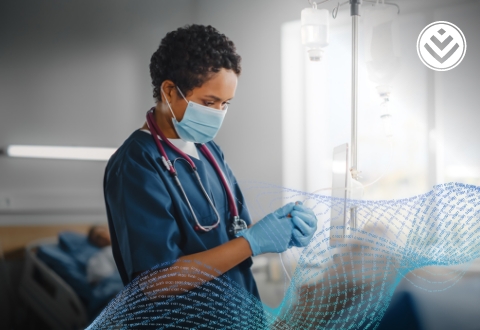
Deep dive: Admission rates across South Africa's four COVID-19 waves confirm Omicron-driven fourth wave's lower severity, and more.
07 July 2022
Authors: Chana Suttner (Actuary, Discovery Health),Michael Cohen (Actuarial Analyst, Discovery Health), Shirley Collie (Chief Healthcare Analytics Actuary, Discovery Health
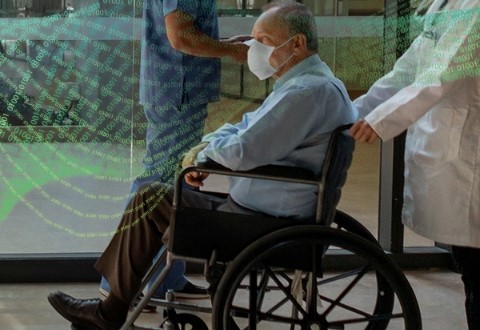
Long COVID symptoms, impact on carrying out daily activities: Survey of just over 7,000 medical scheme members reveals key insights
16 June 2022
Authors: Shirley Collie (Chief Healthcare Analytics Actuary, Discovery Health), Lizelle Steenkamp (Senior Healthcare Statistician, Discovery Health), Lebohang Radebe (Data Scientist, Discovery Health), Dr Smybinn Mathews (Clinician, Discovery Health) and Dr Dave Jacobs (Senior Clinician and Clinical Classification System Architect, Discovery Health)
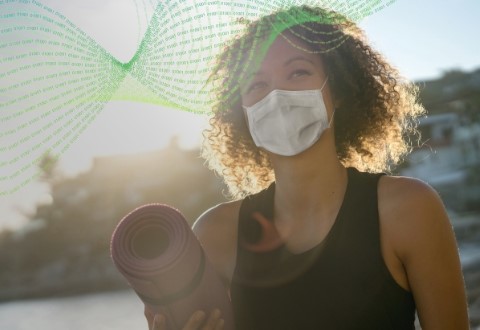
Discovery's COVID-19 personal resilience index predicts an individual's resilience to serious COVID-19 illness
23 May 2022
Authors: Lizelle Steenkamp (Senior Healthcare Statistician at Discovery Health), Tommy Chen (Actuary at Discovery Health), Jared Champion (Senior Actuary at Discovery Health) and Donald Ntjana (Senior Data Scientist at Discovery Health)